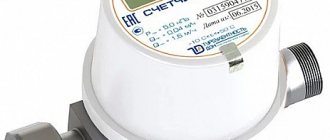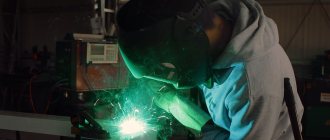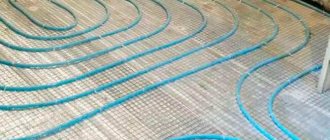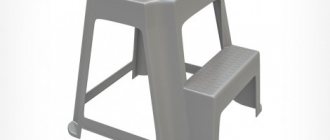The safety requirements for the arrangement of electrical networks intended for a private house, apartment or cottage provide for the installation and connection of two types of protection. The first is against short circuit (SC) and control based on current load. The second is the protection of human life and health from the damaging effects of electricity in the event of contact with live parts of electrical equipment, as well as in cases of current leaks. In both cases, you can protect yourself by connecting a differential circuit breaker in the panel. However, in order for the device to work correctly, you need to approach the choice of its characteristics with understanding. Next, we will tell you how to choose a difavtomat based on power and leakage current.
Purpose, technical characteristics and selection
The differential circuit breaker or differential circuit breaker combines the functions of a circuit breaker and an RCD. That is, this one device protects the wiring from overloads, short circuits and leakage current. Leakage current is formed when the insulation is faulty or when touching live elements, that is, it still protects a person from electric shock.
Difavtomats are installed in electrical distribution panels, most often on DIN rails. They are installed instead of the automatic + RCD combination, and physically take up a little less space. How specific depends on the manufacturer and type of execution. And this is their main advantage, which can be in demand when upgrading the network, when space in the panel is limited and it is necessary to connect a certain number of new lines.
Difavtomats are used to protect wiring from increased loads and people from electric shock.
The second positive point is cost savings. As a rule, a difavtomat costs less than a pair of automatic and RCD with similar characteristics. Another positive point is that you only need to decide on the rating of the circuit breaker, and the RCD is built in by default with the required characteristics.
There are also disadvantages: when one of the parts of the difavtomat is released and built, the entire device will have to be changed, and this is more expensive. Also, not all models are equipped with flags that can be used to determine why the device worked - due to overload or leakage current - which is fundamentally important when determining the reasons.
Characteristics and selection
Since the difavtomat combines two devices, it has the characteristics of both of them and everything must be taken into account when choosing. Let's figure out what these characteristics mean and how to choose a differential machine.
Designation of difavtomats on diagrams
Rated current
This is the maximum current that the machine can withstand for a long time without loss of performance. It is usually indicated on the front panel. Rated currents are standardized and can be 6 A, 10 A, 16 A, 20 A, 25 A, 32 A, 40 A, 50 A, 63 A.
Four-pole automatic circuit breaker for connection to a 380 V network
Small ratings - 10 A and 16 A - are placed on lighting lines, medium ratings - on powerful consumers and socket groups, and powerful ratings - 40 A and above - are mainly used as an introductory (general) circuit breaker. It is selected depending on the cable cross-section, in the same way as when choosing the rating of a circuit breaker.
Time-current characteristic or type of electromagnetic release
Displayed next to the rating, denoted by the Latin letters B, C, D. Indicates at what overload relative to the rating the machine is turned off (to ignore short-term starting currents).
Rating of the automatic circuit breaker and its time-current characteristics
Category B - if the current is exceeded by 3-5 times, C - if the current is exceeded by 5-10 times, type D is turned off at loads that exceed the rating by 10-20 times. In apartments they usually install difavtomats of type C, in rural areas they can install B, in enterprises with powerful equipment and large starting currents - D.
Rated voltage and frequency
What networks is the device intended for - 220 V and 380 V, with a frequency of 50 Hz. There are no others in our distribution network, but still, it’s worth checking out.
Voltage and frequency for which the differential circuit breaker is designed
Differential machines can be double marked - 230/400 V. This means that this device can operate in both 220 V and 380 V networks. In three-phase networks, such devices are placed on socket groups or on individual consumers, where used just one of the phases.
As water automatic machines for three-phase networks, devices with four inputs are required, and they differ significantly in size. It is impossible to confuse them.
Rated residual current or leakage current (settings)
Displays the sensitivity of the device to the resulting leakage currents and shows under what conditions the protection will operate. In everyday life, only two ratings are used: 10 mA for installation on lines in which only one powerful device or consumer is installed, which combines two dangerous factors - electricity and water (instantaneous or storage electric water heater, hob, oven, dishwasher and etc.).
For lines with a group of sockets and outdoor lighting, difavtomats with a leakage current of 30 mA are installed; they are not usually installed on lighting lines inside the house - to save money.
Leakage current or settings on the differential machine
The device can simply have a value written in milliamps (as in the photo on the left) or a letter designation of the setting current can be applied (in the photo on the right), followed by numbers in amperes (at 10 mA it is 0.01 A, at 30 mA the number is 0 .03 A).
Differential protection class
Shows what type of leakage current this device protects against. There is a letter and graphic image. Usually they put an icon, but there can also be a letter (see the table).
| Letter designation | Graphic designation | Decoding | Application area |
| AC | Responses to alternating sinusoidal current | Placed on lines to which simple equipment without electronic control is connected | |
| A | Responses to sinusoidal alternating current and pulsating direct current | Used on lines that power electronically controlled equipment | |
| IN | Captures variable, impulse, constant and smoothed constant. | Mainly used in production with a large number of different equipment | |
| S | With a shutdown time delay of 200-300 ms | In complex circuits | |
| G | With shutdown time delay 60-80 ms | In complex circuits |
The choice of the differential protection class of the difavtomat is based on the type of load. If this is equipment with microprocessors, class A is required; for lighting or power supply lines of simple devices, class AC is suitable. Class B is rarely installed in private houses and apartments - there is no need to “catch” all types of leakage currents. Connecting class S and G circuit breakers makes sense in multi-level protection schemes. They are used as input if there are other differential shutdown devices further in the circuit. In this case, when one of the lower leakage currents is triggered, the input one will not turn off and the serviceable lines will be in operation.
Rated breaking capacity
Shows what current the automatic circuit breaker is able to turn off when a short circuit occurs and remain operational. There are several standard ratings: 3000 A, 4500 A, 6000 A, 10,000 A.
Breaking capacity of difavtomat
The choice of a difavtomat based on this parameter depends on the type of network and the range of the substation. In apartments and houses at a sufficient distance from the substation, difavtomats with a breaking capacity of 6,000 A are used; close to substations, they are installed at 10,000 A. In rural areas, when power is supplied by air and in networks that have not been modernized for a long time, 4,500 A is sufficient.
On the case this number is indicated in a square frame. The location of the inscription may vary depending on the manufacturer.
Current limiting class
For the short circuit current to reach its maximum value, some time must pass. The sooner power is removed from a damaged line, the less likely damage will occur. The current limiting class is displayed in numbers from 1 to 3. The third class - turns off the line the fastest. So choosing a difavtomat on this basis is simple - it is advisable to use devices of the third class, but they are expensive, but they remain operational longer. So, if you have the financial opportunity, install automatic machines of this class.
Current limitation of difavtomat
On the housing this characteristic is shown in a small square frame next to the rated breaking capacity. It can be on the right (for Legranda) or at the bottom (for most other manufacturers). If you did not find such a mark either on the case or in the passport, then this machine does not have a current limit.
Temperature of use
Most differential circuit breakers are designed for indoor operation. They can be operated at temperatures from -5°C to + 35°C. In this case, nothing is placed on the body.
Designation of increased frost resistance of the difavtomat
Sometimes shields are placed outdoors and ordinary protective devices will not work. For such cases, automatic machines are produced with a wider temperature range - from -25°C to +40°C. In this case, a special mark is placed on the body, which looks a little like an asterisk.
Presence of markers indicating the reason for the operation
Not all electricians like to install automatic circuit breakers, because they believe that the combination of protective circuit breaker + RCD is more reliable. The second reason is that if the device works, it is impossible to determine what caused it - an overload, and you just need to turn off some device, or a leakage current, and you need to look for where and what happened.
To solve at least the second problem, manufacturers began to make flags that show the reason for the operation of the automatic device. In some models, this is a small area, the position of which determines the reason for the shutdown.
A checkbox that shows the reason for the shutdown
If the shutdown was caused by an overload, the indicator remains flush with the body, as in the photo on the right. If the automatic circuit breaker operates in the presence of leakage current, the flag protrudes some distance from the body.
Type of design
There are two types of differential automatic machines: electromechanical or electronic. Electromechanical ones are more reliable, as they remain operational even if the power goes out. That is, if a phase fails, they can operate and also turn off the zero. Electronic ones require power to operate, which is taken from the phase wire and when a phase is lost, they lose their functionality.
Manufacturer and price
You shouldn’t skimp on electricity, especially on devices that protect wiring and life. Therefore, it is recommended to always buy components from well-known manufacturers. The leaders in the market are Legrand (Legrand) and Schneider (Schneider), Hager (Hager), but their products are expensive, and there are many fakes. The prices of IEK (IEK), ABB (ABB) are not so high, but there are also more problems with nm. In this case, it is better not to contact unknown manufacturers, as they are often simply ineffective.
The choice is actually not that small, even if you limit yourself to only these five companies. Each manufacturer has several lines that differ in price, and significantly. To understand the difference, you need to carefully look at the technical specifications. The price is affected by each and them, so carefully study all the data before purchasing.
Classification of washing machine drive overloads
Is your washing machine breaking plugs? In many cases, this is caused by incorrect operation of equipment and violation of the terms of its routine maintenance.
Washing machine overloaded
The user’s mentality of “why not put another towel in there” in practice does not speed up, but slows down the wash. When overloaded, the movement of things in the tank is limited and slowed down, so dirt removal is unsatisfactory.
Moreover, things do not receive enough washing powder. It is worth recalling that a detergent is a combination of surfactants that have the property of removing dirt, grease (and, by the way, germs) to the surface of the fabric. There, these harmful components become quite slippery, shake off with a cloth and pass into the soap solution. Unfortunately, this does not happen when the machine is overloaded.
Overload affects not only the items being washed, but also the mechanical design elements typical of a washing machine. Engine and tank bearings are especially affected. Additional loads for which they are not designed lead to jamming and stopping of the rotating drum, the replacement of which is expensive.
The unwritten law says - fill the washing machine tank no more than ¾ of the recommended volume, and operational failures will disappear by themselves. And use only those types of detergents that are recommended specifically for automatic washing!
Poor technical condition of the washer hose
The durability of the hose is limited to no more than five years of operation (it all depends on the intensity of washing). After this, it is unsafe to use the hose: it, as a rule, weakens and can become twisted under the influence of vibration of the machine drive. Let's take into account natural wear and tear and come to the conclusion: a leaky hose will allow an aqueous solution to pass into the body of the washing machine, after which the cause of the short circuit is obvious.
Motor overload
The characteristics of any type of electric motor for washing machines is a certain excess of the starting torque values in relation to the nominal one. However, when overloaded, the starting energy parameters increase sharply, which leads to extreme (“peak”) current consumption.
In general, washing machine motors are built to last and, with proper preventive maintenance, are designed to last the long life of the machine. Engine failure most often occurs for the following reasons:
- Dirt accumulation. Dirt can get into the engine starting switch, causing the moving contacts to close, or, conversely, preventing the contacts from closing reliably. In the first case, the engine does not start at all, but simply hums loudly and consumes an extremely high amount of power. If the circuit breaker does not trip, then operating the motor in this mode will burn its windings. In the second case, the high resistance connection causes a voltage drop that prevents the starting winding from receiving full voltage. Either way, if the situation continues long enough, the motor windings will burn out.
- Worn bearings. They increase the load on the engine and lead to its premature failure. This applies to any type of bearings - in the drive of the washing machine, in the tank or sliding bearings in the engine itself. A burnt out engine usually cannot be repaired.
- Washing machine drive belts. These are V-belts, similar to those used in some brands of cars. Even with normal use, they will wear out over time and require replacement. It is important to ensure the correct belt tension, since a belt that is too tight will put pressure on the engine plain bearings, causing damage.
Having identified the reasons, let's move on to the consequences.
How to connect a difavtomat
Let's start with installation methods and the order of connecting conductors. Everything is very simple, there are no special difficulties. In most cases, it is mounted on a dinrail. To do this, there are special protrusions that hold the device in place.
Dinrail mount
Electrical connection
The difavtomat is connected to the electrical network using insulated wires. The cross section is selected based on the nominal value. Usually the line (power supply) is connected to the upper sockets - they are signed with odd numbers, the load - to the lower ones - signed with even numbers. Since both phase and zero are connected to the differential machine, so as not to confuse it, the sockets for “zero” are labeled with the Latin letter N.
The connection diagram for the difavtomat is usually on the case
In some lines you can connect the line to both the upper and lower sockets. An example of such a device is in the photo above (left). In this case, numbering is written on the diagram through a fraction - 1/2 at the top and 2/1 at the bottom, 3/4 at the top and 4/3 at the bottom. This means that it does not matter whether the line is connected from above or below.
Connecting the difavtomat on the distribution panel
Before connecting the line, remove the insulation from the wires at a distance of approximately 8-10 mm from the edge. At the desired terminal, slightly loosen the fixing screw, insert the conductor, and tighten the screw with sufficient force. THEN the wire is pulled several times to make sure that the contact is normal.
Functionality check
After you have connected the difavtomat and supplied power, you need to check the functionality of the system and the correct installation. First, let's test the unit itself. There is a special button for this, labeled “Test” or simply the letter T. After we have switched the switches to working condition, press this button. In this case, the device should “knock out”. This button artificially creates a leakage current, so we checked the operation of the difavtomat. If there was no operation, you need to check the correct connection; if everything is correct, the device is faulty
If the automatic machine works when you press the “T” button, it is operational
Further testing is to connect a simple load to each outlet. This will check that the socket groups are connected correctly. And the last thing is the alternate switching on of household appliances, which have separate power lines.
The last stage of installation work
If necessary, install additional terminal blocks to connect neutral or ground conductors. Lay the wires themselves horizontally or vertically. This makes the wiring diagram easier to read.
After the fire-fighting circuit breaker, according to the diagram, there are devices that control several or only one electrical group. These can be two, three outlets or a separate group for the washing machine.
When you have completed the connections inside the electrical panel, you can run the wires that come from the junction boxes. Make sure that the neutral and phase wires from the same group go to the same circuit breaker.
Ring the entire circuit from the sockets to the automatic circuit breaker. Be especially careful when installing and making connections in the junction box. Several neutral, grounding and phase wires usually fit there. If you mix up the connections, the machines will constantly knock out.
When you have completely completed the installation, check that all loads are disconnected from the network. Then the introductory machine and all subsequent ones must be turned on. See if any of them work.
If everything is fine, use the test button to check the functionality of all automatic machines. After making sure that they are working, you begin to connect the load in series to each line. If everything is normal, then the machines will not work.
Scheme
When designing a wiring diagram for an apartment or house, there can be many options. They may differ in ease of use, reliability of operation, and degree of protection. There are simple options that require minimal costs. They are usually implemented in small networks. For example, in dachas, in small apartments with a small number of household appliances. In most cases, it is necessary to install a large number of devices that ensure the safety of the wiring and protect people from electric shock.
Schemes come in different levels of complexity
Simple scheme
It does not always make sense to install a large number of protective devices. For example, at a dacha for a seasonal visit, where there are only a few sockets and lighting, it is enough to install only one difavtomat at the entrance, from which separate lines will go to groups of consumers - sockets and lighting - through the machines.
A simple diagram for connecting a difavtomat to a small network
This scheme will not require large expenses, but if a leakage current appears on any of the lines, the difavtomat will work, de-energizing everything. There will be no light until the causes are clarified and eliminated.
More reliable protection
As already mentioned, some automatic machines are placed on “wet” groups. These include the kitchen, bathroom, outdoor lighting, and appliances that use water (except the washing machine). This method of building a system provides a higher degree of safety and better protects wiring, equipment and people.
A more complex and reliable scheme: connecting a difavtomat to every potentially dangerous device
The implementation of this wiring method will require large material costs, but the system will operate more reliably and stably. Since when one of the protective devices is triggered, the rest will remain operational. This connection of the difavtomat is used in most apartments and small houses.
Selective schemes
In extensive power supply networks, there is a need to make the system even more complex and expensive. In this option, an input differential circuit breaker of class S or G is installed after the meter. Further, each group has its own circuit breaker, and, if necessary, they are also installed for individual consumers. See the photo below for connecting the difavtomat for this case.
Selective installation diagram of a difavtomat
With this design of the system, when one of the linear devices trips, all the others will remain in operation, since the input differential switch has a delay in response.
What are the criteria for selecting equipment
If you still prefer the automatic machine as a product of modern technology, choose the product carefully. Please read its technical data carefully. When choosing a machine based on load power, pay attention to the following:
- voltage and phases: products are rated single-phase and three-phase, 220V and 360V, respectively. In the first option there is one terminal, in the second there are three for connection. All indicators are indicated in the equipment passport and marked on the outside of the case;
- leakage current: denoted by the Greek symbol “delta” and calculated in milliamps. You can select correctly based on the following data: for the house as a whole - up to 350 mA, for a specific group - 30 mA, points and lighting - 30 mA, single points - 15 mA, boiler - 10 mA;
- equipment class: A – tripping as a result of DC voltage leakage. AC – in case of alternating current leakage;
- protection against a “zero” gust: if such a thing is detected, the system identifies it as a gust and turns off the equipment;
- switch-off time: indicated by the symbol Tn and should not exceed 0.3 seconds.
Basic errors in connecting difavtomats
Sometimes, after connecting the difavtomat, it does not turn on or turns off when any load is connected. This means that something was done wrong. There are several common mistakes that occur when assembling the shield yourself:
- The wires of the protective zero (ground) and the working zero (neutral) are combined somewhere. With such an error, the automatic machine does not turn on at all - the levers are not fixed in the upper position. We will have to look for where “ground” and “zero” are combined or confused.
- Sometimes, when connecting a difavtomat, the zero for the load or for lower-lying machines is taken not from the output of the device, but directly from the zero bus. In this case, the switches are in the working position, but when you try to connect the load, they are instantly turned off.
- From the output of the difavtomat, zero is not supplied to the load, but goes back to the bus. Zero for the load is also taken from the tire. In this case, the switches are in the working position, but the “Test” button does not work and when you try to turn on the load, a shutdown occurs.
- The zero connection is mixed up. From the zero bus, the wire must go to the corresponding input, designated by the letter N, which is located at the top, not down. The wire should go to the load from the lower neutral terminal. The symptoms are similar: the switches turn on, the “Test” does not work, and when the load is connected, it triggers.
- If there are two automatic circuit breakers in the circuit, the neutral wires are mixed up. When such an error occurs, both devices are turned on, “Test” works on both devices, but when any load is turned on, both machines are knocked out at once.
- If there are two automatic machines, the zeros coming from them are connected somewhere further. In this case, both machines are cocked, but when you press the “test” button on one of them, two devices are switched off at once. A similar situation occurs when any load is turned on.
Now you can not only select and connect a differential circuit breaker, but also understand why it is tripping, what exactly went wrong and correct the situation yourself.
Differences between protective devices
It is necessary to distinguish between a device in the form of a difavtomat and a residual current device. At first glance, there is no particular visible difference, but this is not so.
The RCD is used to de-energize the network when the slightest leak in the circuit is detected. For example, if an electrical cable is damaged, in order not to injure a person, the circuit will be turned off.
The difavtomat, in addition to the RCD, is equipped with a built-in automatic type switch. It serves to de-energize the system, prevent short circuits, overload the circuit, in general. In a word, it's two in one.
A conventional circuit breaker (circuit breaker) protects the circuit from overload, but it cannot create a safe environment for humans. Therefore, in modern buildings either difautomatic devices are installed, or RCDs and automatic devices are installed together.
The selection of any protective device depends on the characteristics of the network. Primarily from the load connected to it. Therefore, it is important to know how to calculate the power of the machine based on the load.
Malfunctions
There are often cases when the RCD turns off when the water heater or washing machine is turned on. There are a number of reasons for this:
- the water heater or machine itself is faulty;
- the installed RCD or automatic circuit breaker does not correspond to the parameters of the electrical network;
- there is a short circuit in the power cord;
- the motor, power supply or heating element is damaged;
- the installation of the RCD for the washing machine or water heater was carried out with errors;
- Voltage surges or current leaks have occurred in the electrical network.
Foreign models
ABB is perhaps the most famous brand on the market of automatic protective devices, chosen by hundreds of thousands of customers. Owned by a joint Swedish-Swiss company. Currently, production facilities are located in more than one hundred countries.
According to numerous reviews, the company produces some of the best automatic machines. The price can range from 2000 to 4000 rubles for single-phase devices, depending on the parameters and model.
The French product brand LeGrand is widely known throughout the world. This brand is characterized by the presence of a large number of models of manufactured difavtomats, including those for a three-phase circuit. The cost of three-phase automatic machines reaches 10,000-12,000 rubles.
Single-phase ones are comparable in price to the products of the previous brand. It is worth choosing such a differential machine if you prefer European quality.
Schneider Electric is another French brand in the market of protective device manufacturers. In the line of difavtomats there is even a model of a single-phase device the size of one module. Placing production in China made it possible to significantly reduce the price of finished products, and now products from this company can be found on the Russian market at prices ranging from 1,500 to 3,000 rubles.
The Siemens brand is a product of a German company with a long history. It produces many types of industrial and household appliances. There is no specialization in electrical products. Apparently this is why the quality is somewhat lower than that of previous manufacturers. The price of the products is 2000-5000 rubles.
Which brands are best to use?
There are many manufacturers of components for electrical and electrical work. Considering the nature of the application and increased requirements for reliability, when choosing a differential machine, it is necessary to take into account the rating of companies that produce such products, as well as the specific manufacturer.
Many firms locate their production in developing countries, which reduces production costs. Often, in such cases, the price of the device turns out to be more affordable.
Below are the product brands of the most common manufacturers with descriptions. These descriptions will help you select differential machines based on your needs and planned costs. Descriptions are presented in descending order of quality characteristics, according to reviews published on the Internet.
Domestic models
KEAZ is a domestic manufacturer of differential circuit breakers and other protection devices. The quality is average, but the products come with a two-year warranty. The price is 1000-1500 rubles for single-phase products.
IEK is also a domestic brand. The products are in great demand due to the successful combination of price and quality. In fact, product shortcomings, such as imperfect terminals, noise during operation, are compensated by the price of 700-1000 rubles for single-phase products.
DEKraft is another Russian brand. The company was formed relatively recently. The quality of the products leaves much to be desired, but at the same time the products comply with Russian standards. The disadvantage is the short service life of the products. Considering the low price (600-1000 rubles), contractors willingly use products of this brand for installation on low-budget projects.
Many manufacturers often produce budget automatic machines, and even entire lines of models with low prices. Therefore, when choosing, it is recommended to carefully study product catalogs.
Of course, when choosing a differential machine, you need to focus not only on price and manufacturer. The operating conditions of the device must be taken into account.
It is possible to use devices with a lesser degree of reliability in utility rooms, where the specific time of use of electrical wiring is small. If the need for such automatic machines is great, then the cost savings can be significant.











